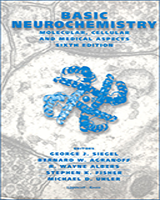From: Molecular Components of the Neuronal Cytoskeleton

NCBI Bookshelf. A service of the National Library of Medicine, National Institutes of Health.

Microfilaments, microtubules and intermediate filaments in the nervous system. Each cytoskeletal structure has a distinctive ultrastructure. This schematic illustrates the major features of the core fibrils. The microfilament consists of two strands of actin subunits twisted around each other like strings of pearls. The individual subunits are asymmetrical, globular proteins that give the microfilament its polarity. The microtubule is also made from globular subunits, but in this case the basic building block is a heterodimer of α- and β-tubulins. These αβ dimers are organized into linear strands, or protofilaments, with β-tubulin subunits oriented toward the plus end of the microtubule. Protofilaments form sheets in vitro that roll up into a cylinder with 13 protofilaments forming the wall of the microtubule. Assembly of both microfilaments and microtubules is coupled to slow nucleotide hydrolysis, ATP for microfilaments and GTP for microtubules. The subunits of both glial filaments and neurofilaments are rod-shaped molecules that will self-assemble without nucleotides. The core filament structure is thought to be a ropelike arrangement of individual subunits. Glial filaments are typical type III intermediate filaments in that they form homopolymers without side arms. In contrast, neurofilaments are heteropolymers formed from three subunits, NFH, NFM and NFL for the high-, medium- and low-molecular-weight subunits. The NFH and NFM subunits have extended carboxy-terminal tails that project from the sides of the core filament and may be heavily phosphorylated.
From: Molecular Components of the Neuronal Cytoskeleton

NCBI Bookshelf. A service of the National Library of Medicine, National Institutes of Health.